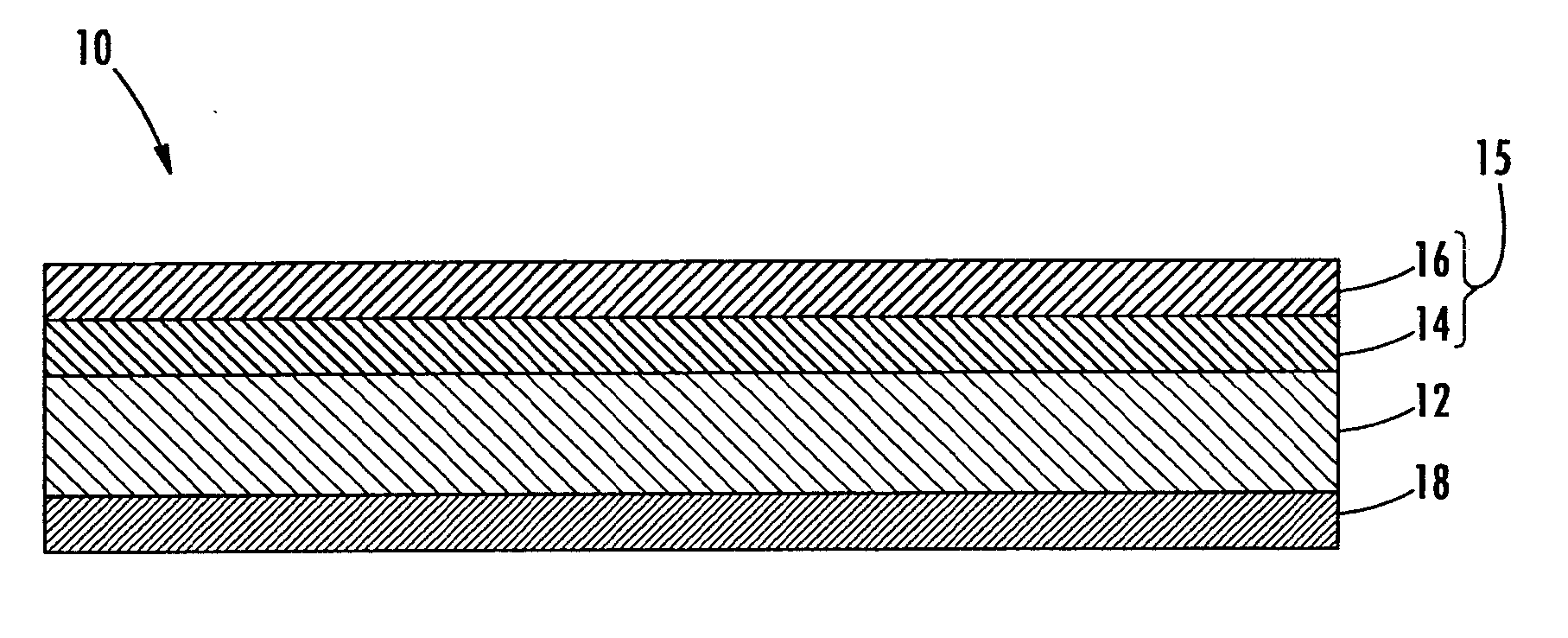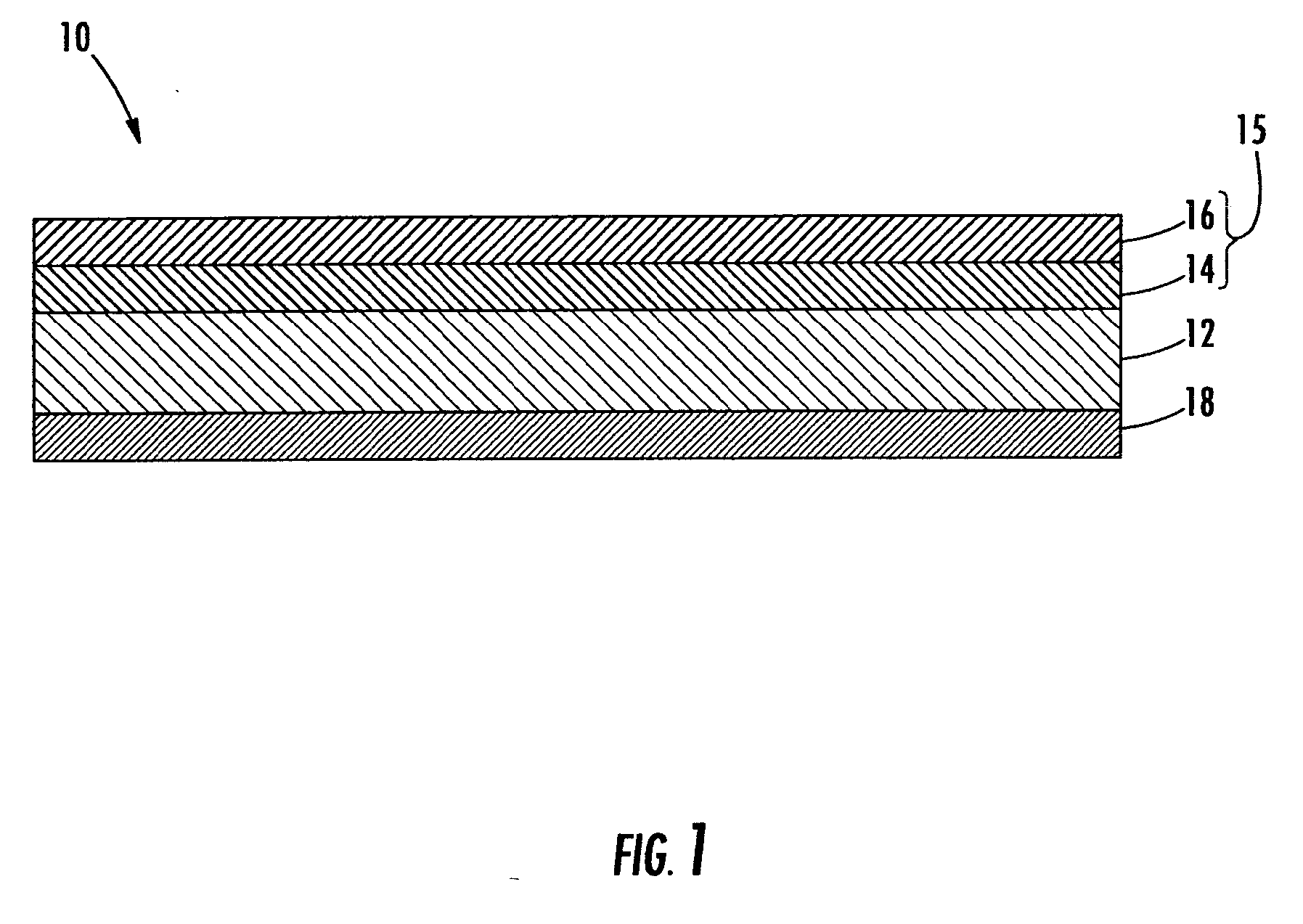Ink-jet media having supporting intermediate coatings and microporous top coatings
a technology of intermediate coatings and inkjet media, which is applied in the direction of pretreatment surfaces, coatings, duplication/marking methods, etc., can solve the problems of affecting the production efficiency of such microporous coatings, affecting the speed of the coating line, and forming cracks and splits in the coating, etc., to achieve less forcing conditions, less cost, and significant economic advantages
- Summary
- Abstract
- Description
- Claims
- Application Information
AI Technical Summary
Benefits of technology
Problems solved by technology
Method used
Image
Examples
example 1
[0044]
% WeightTrade NameSupplierDescription(solids)Joncryl 624JohnsonStyrene Acrylic Copolymer69.9PolymersPVP-K60ISPpoly(vinyl pyrrolidone)30BYK 380Byk-ChemieFluorinated acrylic0.1
example-2
[0045]
% WeightTrade NameSupplierDescription(solids)JoncrylJohnsonStyrene Acrylic Solution30HPD-71PolymersCopolymer (high Tg, high acid#)Joncryl 624JohnsonStyrene Acrylic Emulsion39.9PolymersCopolymer (low Tg, low acid#)BYK 380Byk-ChemieFluorinated acrylic0.1PVP-K60ISPPolyvinyl Pyrrolidone30
example-3
[0046]
% WeightTrade NameSupplierDescription(solids)JoncrylJohnsonStyrene Acrylic Solution29HPD-71PolymersCopolymer(high Tg, high acid#)Joncryl 624JohnsonStyrene Acrylic Emulsion38.9PolymersCopolymer(low Tg, low acid#)BYK 380Byk-ChemieFluorinated acrylic0.1PVP-K60ISPpoly(vinyl pyrrolidone), PVP29BoraxSpectrumsodium tetraborate decahydrate3.0Chemicals
PUM
| Property | Measurement | Unit |
|---|---|---|
| glass transition temperature | aaaaa | aaaaa |
| Tg | aaaaa | aaaaa |
| glass transition temperature | aaaaa | aaaaa |
Abstract
Description
Claims
Application Information
 Login to View More
Login to View More - R&D
- Intellectual Property
- Life Sciences
- Materials
- Tech Scout
- Unparalleled Data Quality
- Higher Quality Content
- 60% Fewer Hallucinations
Browse by: Latest US Patents, China's latest patents, Technical Efficacy Thesaurus, Application Domain, Technology Topic, Popular Technical Reports.
© 2025 PatSnap. All rights reserved.Legal|Privacy policy|Modern Slavery Act Transparency Statement|Sitemap|About US| Contact US: help@patsnap.com


